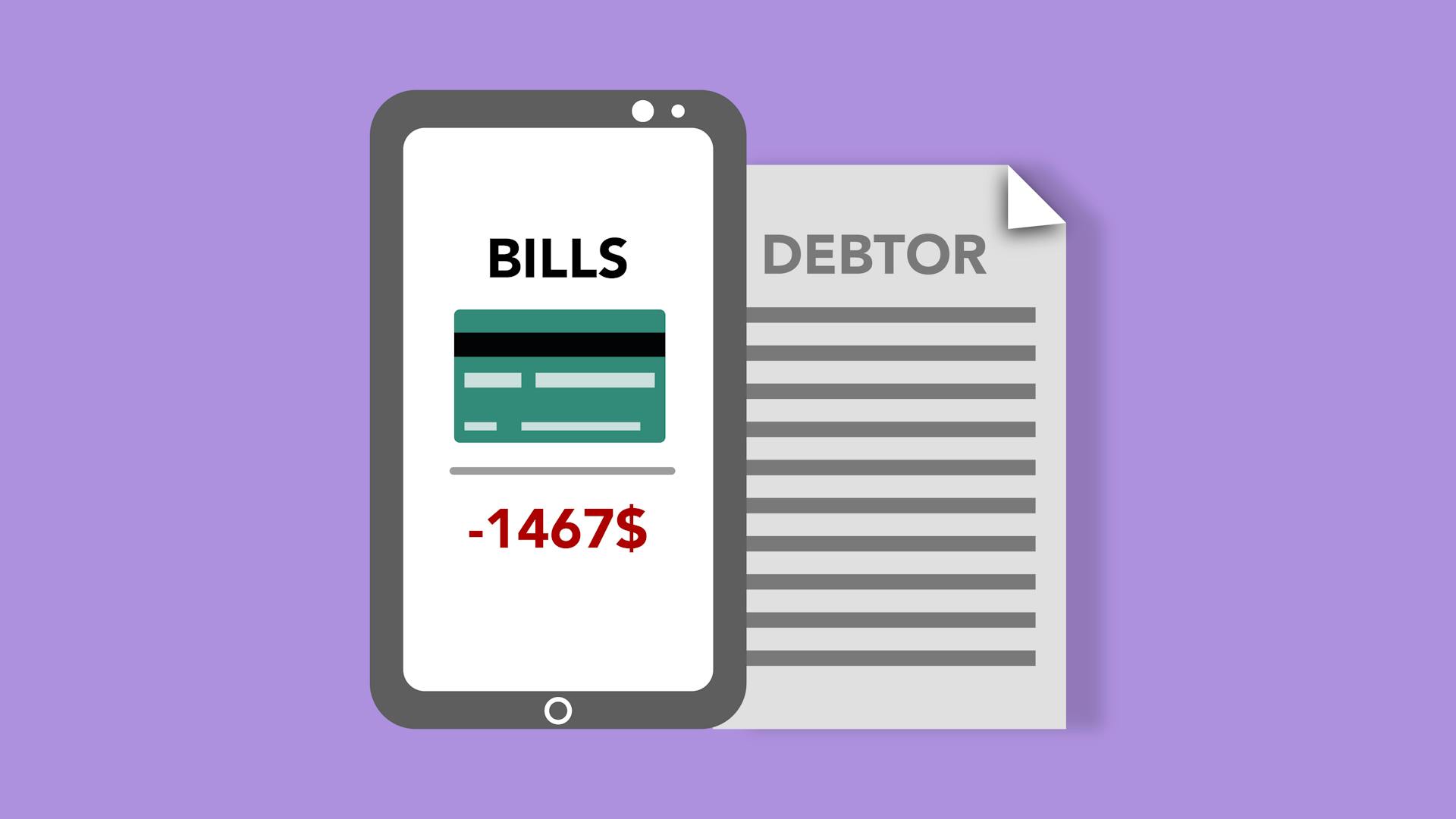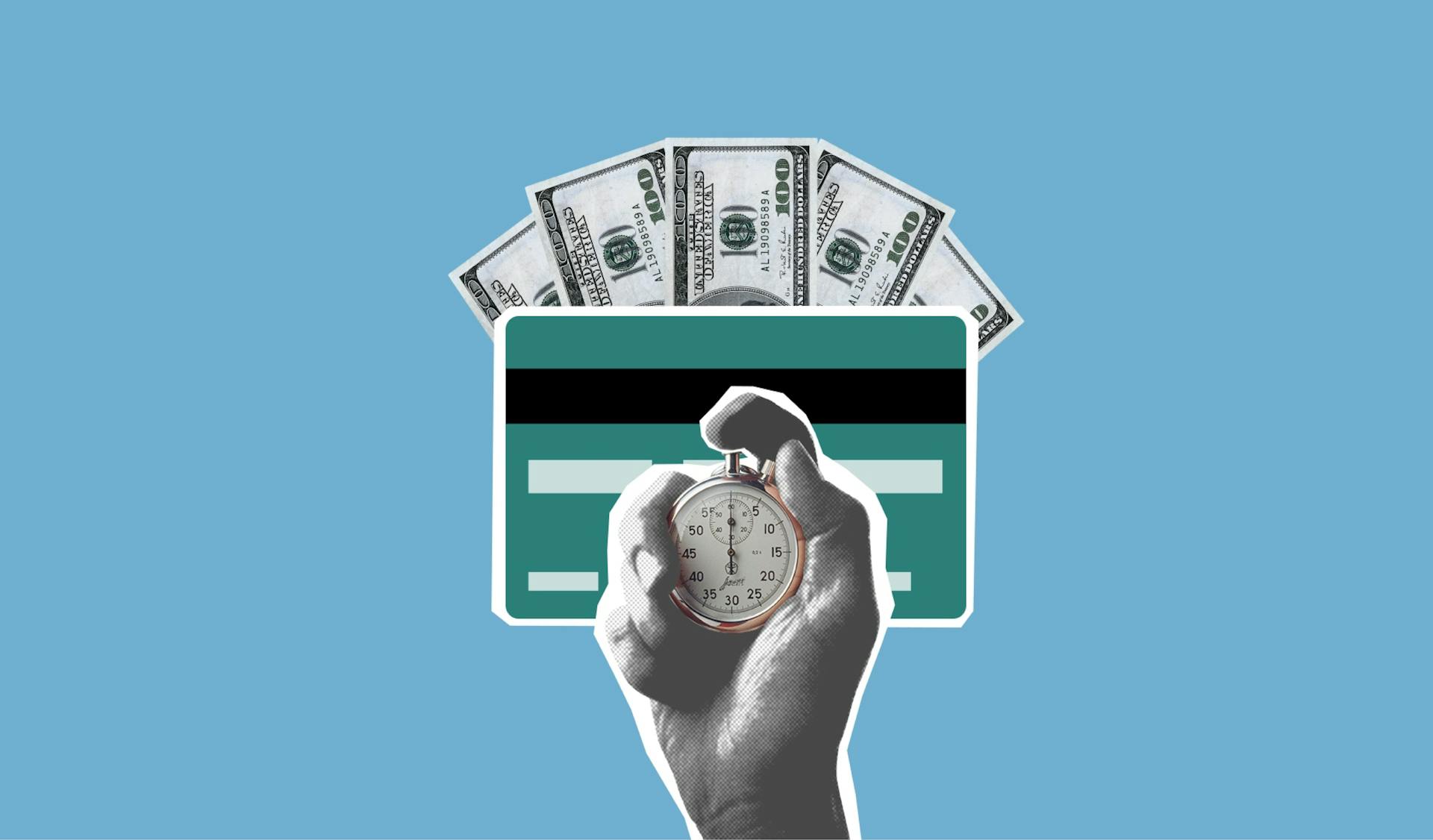
The number of Americans in credit card debt is a staggering issue in the United States. According to the Federal Reserve, over 130 million Americans have outstanding credit card debt.
Many people struggle to pay off their credit card balances, with the average credit card debt per household being over $6,000. This can lead to a cycle of debt that's difficult to break.
The high interest rates on credit cards can make it even harder to pay off debt, with some cards charging as high as 30% interest. This can quickly add up, making it challenging for individuals to get back on their feet financially.
Explore further: Credit Cards for High Debt
Credit Card Debt Statistics
Credit card debt is a significant issue in the US, with many Americans struggling to pay off their balances. The total credit card debt held by Americans reached an estimated $1.14 trillion by the end of the second quarter in 2024.
This staggering number represents an increase of $27 billion since 2023, highlighting the growing concern of credit card debt in the country.
Who is Affected

Women and lower-income individuals are disproportionately affected by credit card debt.
Women working full-time and year-round earn 84 cents for every dollar earned by their male counterparts, which can lead to a higher likelihood of carrying a credit card balance month to month.
52 percent of female cardholders carry a credit card balance compared to 44 percent of male cardholders.
Lower-income households are also more likely to carry debt, with 59 percent of cardholders with annual household incomes under $40,000 carrying a balance.
Here's a breakdown of the likelihood of carrying credit card debt by income level:
- Cardholders with annual household incomes under $40,000: 59 percent
- Cardholders with annual household incomes between $40,000 and $79,999: 49 percent
- Cardholders with annual household incomes of $80,000+: 41 percent
Reasons for Credit Card Debt
Credit card debt is often the result of unexpected expenses. Nearly half of credit card debtors, 47 percent, point to emergencies or unexpected expenses as the primary cause of their debt.
These expenses can be anything from medical bills to car repairs, and even home repairs. In fact, 15 percent of debtors specifically mention emergency or unexpected medical bills as the reason for their debt.
Day-to-day expenses are also a significant contributor to credit card debt. A quarter of debtors, 28 percent, cite expenses like groceries, childcare, and utilities as the primary cause of their debt.
Here's a breakdown of the most common reasons for credit card debt:
It's worth noting that some debtors may be carrying a balance for longer than others. In fact, 53 percent of credit card debtors have been in debt for at least a year, while 18 percent have been in debt for less than 6 months.
Common Reasons for Financial Emergencies
Emergency expenses can be a major contributor to credit card debt. Nearly half of credit card debtors (47%) say that an unexpected expense was the primary cause of their debt.
Unexpected medical bills are a common culprit, with 15% of debtors citing this as the reason for their debt. Car repairs and home repairs are also frequent causes, with 9% and 7% of debtors respectively naming these as the primary cause.
Day-to-day expenses, such as groceries, childcare, and utilities, are also a significant contributor to credit card debt. In fact, more than a quarter (28%) of credit card debtors cite these expenses as the primary cause of their debt.
Here's a breakdown of the most common causes of credit card debt:
It's worth noting that many people rely on credit cards as a way to cover unexpected expenses, rather than having a separate emergency fund. In fact, about 36% of Americans have more credit card debt than emergency savings.
Why We Rack Up Bills to Feel Better
About 55% of Americans live paycheck to paycheck, and many people lean into credit cards for emergency expenses not because they want to, but because they have to. They may take out credit cards or personal loans to cover unexpected costs.
For some, credit card debt is a coping mechanism for emotional pain. Carmen Cusido, a 40-year-old public relations professional, spent money to navigate grief after her parents died. She invested in therapy and traveled to four new countries, using credit cards to finance her expenses.
Research suggests that the mere anticipation of using a credit card for a purchase activates the reward network in our brain, releasing dopamine. This can create a feedback loop that reinforces overspending. In Carmen's case, she took out a $13,000 debt consolidation loan, but her total debt burden increased instead of decreasing.
The psychology of retail therapy is complex, but it's clear that targeted advertising plays a significant role. Credit card issuers use these same tactics to encourage people to spend more. As Traci Williams, a board-certified psychologist, notes, "It can be helpful to remind yourself that a company's goal is to get you to spend."
Math is Hard
Credit card math is hard to grasp, and it's no wonder why many people get stuck in the minimum payments trap. According to the Lupo's, a couple who run a personal finance online education company, not realizing the true cost of minimum payments kept them stuck for years.
At current credit card APRs, paying only the minimum means you'll pay considerably more than the original balance by the time you're done. This is a common problem, as many people are unaware of the impact of making minimum credit card payments.
The Credit CARD Act of 2009 requires lenders to issue minimum payment warnings in their correspondence, but a financial literacy gap remains. This gap is evident in the way people think they're making progress on their debt, but in reality, they're just accumulating more interest.
People often get confused about what a minimum payment does, thinking it's a good thing to pay only the minimum, but the truth is, it's a recipe for debt stagnation. As Stacey Black, lead financial educator at BECU, says, "I'll show you the calculation of how long it's going to take to pay that off — it's not good."
Stacey Black's own experience with credit card debt is a testament to the importance of financial literacy. At 18, she had no clue about debt collection and ended up accumulating debt, which had a significant impact on her financial future.
Consider reading: Using Credit Cards to Pay off Other Credit Cards
Managing Credit Card Debt

Managing credit card debt is a challenging task, but it's possible to get back on track. Setting a goal is a crucial first step, whether it's paying off one or more credit cards or getting out of debt completely. Writing down your goal and an achievable timeline can help you stay motivated.
Paying down credit card debt can improve your credit score by lowering your credit utilization ratio, which is the percentage of available credit in use. This can also help you save on interest charges.
If you're struggling with serious debt, it may be helpful to consider credit counseling to learn more about debt relief options.
Here's an interesting read: Legal Help with Debt Collectors
Average
Alaska residents carried the highest average credit card debt at $7,863 in the third quarter of 2023.
If you're a resident of a state with high average credit card debt, it's essential to take control of your finances and create a plan to pay off your debt.
Discover more: How Many Credit Cards Does an Average American Have

Alaska's average credit card debt is significantly higher than the national average, which means residents of this state may need to be more mindful of their spending habits.
To put Alaska's average credit card debt into perspective, the lowest average credit card debt is in Iowa, where residents carried an average balance of $5,227 in Q3 2023.
Here are the top 10 states with the highest average credit card debt in Q3 2023:
Understanding the average credit card debt in your state can help you set realistic financial goals and develop a plan to manage your debt effectively.
Building an Emergency Fund
Building an emergency fund can be a challenge, especially when income has stagnated and the cost of living continues to rise. From 1979 to 2013, hourly pay for middle-wage workers increased only 6%, while the cost of goods rose significantly.
Having a low cash reserve can lead to relying on credit cards, which can be treacherous with current APRs over 20%. Average APRs have spiked to over 20%, a 30% increase over the last year and a half.

It's essential to prioritize saving and building an emergency fund to avoid accumulating credit card debt. The median credit limit for Gen Z borrowers was $4,500, which is often not enough to cover unexpected expenses.
Gen Z credit cardholders are already feeling the credit card inertia, with 1 in 7 being maxed out. This is partly because younger borrowers typically have lower credit limits and are more likely to adopt credit cards earlier in life.
To break the cycle of credit card debt, focus on building a stable emergency fund. This will help you avoid relying on credit cards and reduce the risk of accumulating high-interest debt.
Paying Down
Paying down credit card debt is a crucial step in managing your finances. You can improve your credit score by lowering your credit utilization ratio, which is the percentage of available credit in use.
Setting a specific goal is essential to paying down credit card debt. Determine whether you want to pay off one or more credit cards or get out of debt completely, and write it down along with an achievable timeline.
Broaden your view: Nerdwallet Debt Consolidation Loan vs Paying off Credit Card Debt
Paying more than the minimum payment on your credit card bill can save you money on interest charges. By paying down your debt, you'll be less likely to accumulate more interest over time.
Consider seeking help from a credit counselor if you're struggling to make the minimum payments. They can provide you with debt relief options and help you create a plan to manage your debt.
Related reading: Credit Cards Debt Help
Did You Know?
More than 191 million Americans have credit cards, which is a staggering number.
The average household credit card debt is a whopping $5,315. That's a significant amount of money that could be put towards other important expenses.
Total U.S. consumer debt is at $14.9 trillion, which includes mortgages, auto loans, credit cards, and student loans. That's a huge burden on individuals and families.
To get out of debt, it's essential to stick to a budget that's realistic and takes into account your needs, as well as those of your partner or family.
The average credit card holder has at least 2.7 cards, which can make debt harder to manage.
Regional Data
The number of Americans in credit card debt varies greatly by region. The South has the highest percentage of households with credit card debt, with 64.8% of households carrying debt.
In the South, the average credit card debt per household is $5,600. This is significantly higher than the national average of $4,300.
The Northeast has the lowest percentage of households with credit card debt, with 45.3% of households carrying debt.
States with Highest Averages
States with the highest average credit card debt vary significantly across the country. Alaska holds the top spot with an average credit card debt of $7,863 in the third quarter of 2023.
The District of Columbia comes in second with an average credit card debt of $7,548. New Jersey's average credit card debt is $7,401, while Connecticut's is $7,381.
Maryland's average credit card debt is $7,282, followed closely by Texas at $7,211. Florida's average credit card debt is $7,112, and Hawaii's is $7,107.
Virginia's average credit card debt is $7,002, and Colorado's is $6,996. These states have the highest average credit card debt in the country, according to credit card debt statistics.
Here are the top 10 states with the highest average credit card debt:
- Alaska: $7,863
- District of Columbia: $7,548
- New Jersey: $7,401
- Connecticut: $7,381
- Maryland: $7,282
- Texas: $7,211
- Florida: $7,112
- Hawaii: $7,107
- Virginia: $7,002
- Colorado: $6,996
California
California is a state with a significant mortgage debt burden, with the average Californian owing $371,981 in 2020, second only to the District of Columbia.
The state's unemployment rate is 8.3%, which is lower than only two other states, Hawaii and New York.
California's home foreclosure rate has fallen to 10 in 2020, a significant decrease from its previous high.
The average Californian carries a credit-card balance of $6,222, which ranks 16th-highest nationally.
However, California residents have a relatively low credit-card debt at $5,120.
The average student-loan balance in California is $28,950, which is well below the national average.
California residents have an average credit score of 716, which ranks in the middle nationally.
For another approach, see: Credit Card Balance Check Number
Michigan

Michigan has made significant strides in reducing its unemployment rate, which plummeted from 13.7% in 2009 to 3.9% in 2017, the lowest in nearly two decades.
The state's bankruptcy rate has also improved, with Michigan now having the nation's 12th-highest rate.
Michigan's average credit score has risen to 714, three points above the national average, indicating a more stable financial situation for residents.
This improvement is also reflected in the state's average credit-card debt, which stands at $5,399, the 11th-lowest nationally.
Ohio
Ohio is managing to avoid many debt problems despite having only the nation's 34th-best median income. The state's residents have a relatively high average FICO score of 711, which hits the national average on the nose.
Ohio has the nation's fourth-best average mortgage debt at $125,250, which is a significant amount. This suggests that many Ohioans are taking on substantial mortgage obligations.
The state also ranks 18th in average credit-card debt, with a balance of $5,560. This is a manageable amount, but still a notable expense for many households.
Ohioans have the 23rd-best average student loan debt at $37,383, which is a significant burden for some individuals. This amount can be a heavy weight for those trying to start their careers or families.
Texas

Texas residents are facing a significant financial challenge, with an average mortgage debt of $186,696, a figure that's on the rise. This is one of the steepest climbs in the country.
The state's credit-card debt is a staggering $6,753, ranking it the nation's seventh highest. This suggests that many Texans are struggling to make ends meet.
The average credit score in Texas is a relatively low 697, falling short of the national average of 711, a record high. This could be a sign that Texans are having trouble making on-time payments, which can severely impact their credit history.
Virginia
Virginia is a state with a notable financial profile. It ranks fifth in the nation for credit-card debt, with an average of $6,969 per person.
The state's residents also carry a significant burden of mortgage debt, ranking eighth in the country with an average of $245,054. This is likely due to the state's high cost of living and housing costs.

Virginia's median household income is a respectable $74,222, more than $8,000 higher than the U.S. median. This suggests that many residents have stable and secure financial situations.
The state's high average credit score of 717 is a testament to its residents' responsible payment habits. This is a key factor in maintaining good financial health and avoiding debt.
You might like: Pc Credit Cards
Frequently Asked Questions
Is $20,000 in credit card debt a lot?
A balance of $20,000 in credit card debt is considered a significant amount that can have a substantial impact on one's finances. Carrying such a large debt can lead to increased financial burdens and difficulties in managing payments.
Sources
- https://www.bankrate.com/credit-cards/news/credit-card-debt-survey/
- https://www.cnet.com/personal-finance/credit-cards/features/maxed-out-inside-americas-credit-card-debt-crisis-and-what-we-do-next/
- https://www.discover.com/credit-cards/card-smarts/average-credit-card-debt/
- https://www.stocktitan.net/news/LC/caught-in-a-loop-more-americans-are-unwittingly-ending-up-on-a-btr2aimefx48.html
- https://www.debt.org/faqs/americans-in-debt/
Featured Images: pexels.com


